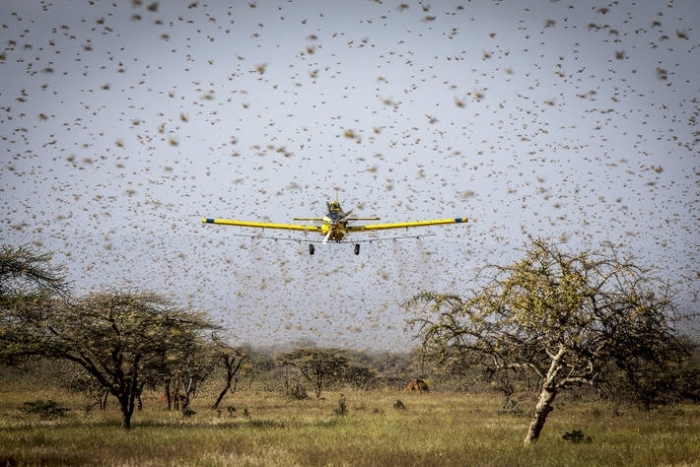Food and Agriculture Organization (FAO) Director-General QU Dongyu welcomed a contribution of € 11 million from the European Union as the UN agency is stepping up efforts to combat the upsurge in the Desert Locust that has now spread from East Africa to the Persian Gulf. The European Commission reported that 10 million euro would come from the Directorate-General for International Cooperation and Development (DEVCO) of the European Commission. The European Civil Protection and Humanitarian Aid Operations (ECHO) has also provided another € 1 million. “I want to thank the European Union for its solidarity and assistance because the Desert Locust is threatening to trigger a humanitarian crisis in East Africa,” said Qu.
The Director-General said the situation in a country where 20 million people were already deemed food insecure is extremely alarming. The locust outbreak is the worst in 25 years in Ethiopia and Somalia and the worst infestation Kenya has ever experienced in 70 years. Also affected were Djibouti and Eritrea, while swarms in South Sudan, Uganda and the United Republic of Tanzania were recorded. There has been a new development this week as strong winds have carried swarms of Desert Locusts to both sides of the Persian Gulf to Bahrain, Kuwait and Qatar entering southwest Iran.
“We urgently need to step up action to protect rural livelihoods, and help farmers and their families,” Qu said. “There is no time to waste.” The Desert Locust is considered the world’s most damaging migratory pest and a small swarm that covers one square kilometer will eat the same amount of food as 35,000 people in a single day. The FAO has called for immediate funding of $138 million to help the countries that have been affected. Just $52 million has been earned so far. Rodrigo de Lapuerta Montoya, director of the FAO liaison office in Brussels, gave an update on last week’s upsurge to the Council of the European Union’s Working Party on Humanitarian Aid and Food Aid. Member States have expressed concern over the situation and have affirmed their commitment and trust in the work of the FAO. Dominique Burgeon, director of emergencies and readiness at the FAO, also briefed the Committee on Progress at the European Parliament in Brussels.
“That is an extreme situation,” said Burgeon. “We have a window of opportunity to get this under control.” FAO’s Desert Locust Information Service says new infestations are likely to exacerbate the situation further in the coming months.
Pasture and croplands have already suffered damage in Djibouti, Eritrea, Ethiopia, Kenya and Somalia, with potentially serious repercussions for the region where millions of people depend on farming and livestock rearing for their survival. If, as predicted, favorable weather conditions continue the needs will increase. The FAO is already on the ground assisting governments and other agencies with oversight and planning, technical advice and supply and equipment procurement. The UN agency is also planning action to protect rural livelihoods by providing farming supplies for distressed farmers, veterinary treatment for vegetation-hungry livestock and cash for families who have lost their crops to buy food.
The FAO suggested the following sums out of the $138 million to help tackle the outbreak: Djibouti ($1,965,000); Eritrea ($8,500,000); Ethiopia ($50,500,000); Kenya ($22,100,000); Somalia ($32,200,000); South Sudan ($8,650,000); United Republic of Tanzania ($505,000); Uganda ($8,580,000);
Desert Locust tracking, forecasting, and control are essential to the mandate of the FAO. The Desert Locust Information Service runs for almost 50 years. The well-established field presence of the FAO, the ability to connect authorities from various countries and Desert Locust management experience make it a key player in responding to upsurges such as those currently affecting East Africa and the Red Sea region.
Data Source: Food and Agriculture Organization (FAO)




